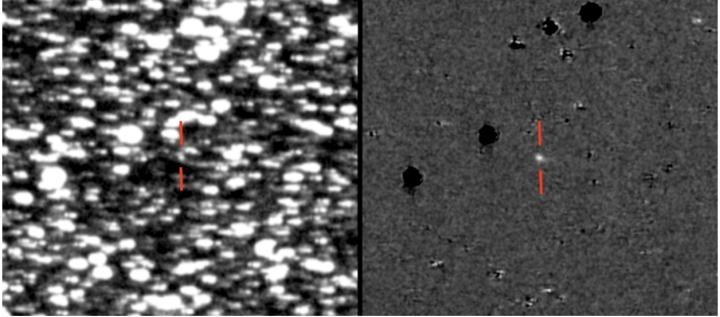2019 LD2: the unruly comet
Asteroids and comets are generally thought to be different classes of celestial objects. But is the strict distinction really justified? The interstellar visitor ʻOumuamua, for example, was initially thought to be a comet, but didn’t develop either a coma or a tail and was then classified as an asteroid. In the meantime, its trajectory has been calculated so precisely that it must have lost mass – which means it is definitely a comet.
The object 2019 LD2 discovered by the Asteroid Terrestrial-impact Last Alert System (ATLAS) of the University of Hawaii also appears to be some sort of hybrid. Discovered in June 2019, it was thought at first to be an asteroid, but quickly there were indications that it had comet-like properties. In July 2019, it developed a small tail, which it has kept to today. Therefore, 2019 LD2 must be an active object – a comet.
However, there’s a small problem: according to astronomers of the University of Hawaii, 2019 LD2 might belong to a group of asteroids, the so-called Trojans, on the same orbit as Jupiter, but leading the way in front of the giant planet. There are a few thousand of them, but none of them are comets. And there’s also a reason for that: Jupiter captured its Trojans billions of years ago. Since then, they’ve orbited the Sun so many times that any volatile material should have been exhausted a long time ago. So how could 2019 LD2 develop a tail now? Well, astronomers have long thought that there were still ice deposits hidden in the interior of all these asteroids. But this ice was being protected by a dense rocky shell, so nothing could get out anymore. 2019 LD2’s shell might have been damaged in a collision or a rockslide, so that ice was exposed and is now evaporating and forming a tail.
But maybe it’s something completely different. 2019 LD2 was only found by chance close to the Jupiter Trojan asteroids. Maybe it is a member of the Jupiter-family comets like 67P/ Churyumov–Gerasimenko. At least, that’s what the Minor Planet Center thinks, which has assigned it the full name P/2019 LD2 (ATLAS).
